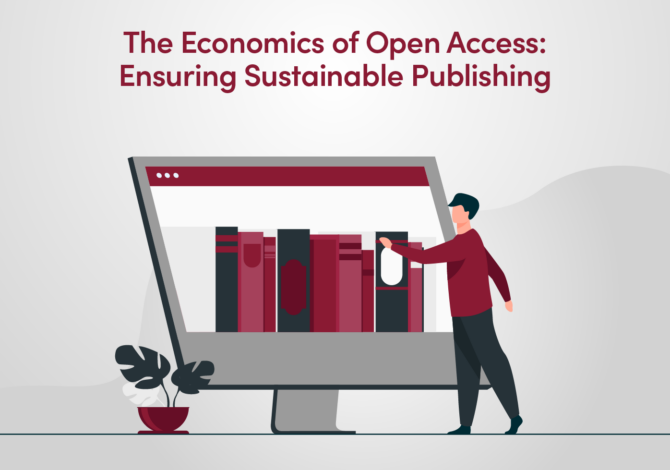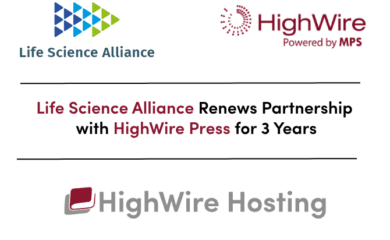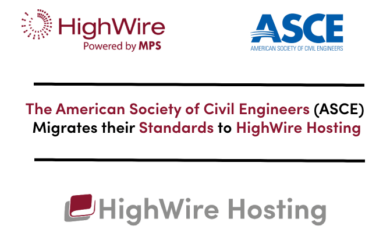In the vast realm of academic publishing, Open Access (OA) has emerged as a transformative force, reshaping the traditional boundaries of knowledge dissemination. At its core, OA publishing represents a paradigm shift, empowering researchers to make their scholarly articles freely available to readers worldwide. OA fosters the democratization of knowledge, enabling unrestricted exploration of cutting-edge research findings.
Yet, like any major shift, it comes with its own set of challenges and complexities that warrant thorough exploration.
Open Access is not monolithic; it takes various forms, including Green, Gold, and Platinum OA, each presenting unique opportunities and challenges.
The Green Open Access model, also known as self-archiving, allows authors to publish their work in any journal and then self-archive a copy of the article for free public use in a repository. This model does not usually require additional payment, beyond standard publishing costs. However, publishers often impose an embargo period, limiting immediate access to the work.
In contrast, Gold Open Access ensures immediate public access upon publication in an OA journal. These journals typically cover their costs through Article Processing Charges (APCs) paid by authors or their institutions. While this model provides instant access, the APCs can be a hurdle for authors with limited funding.
A third type, Platinum (or Diamond) Open Access, provides immediate public access to works without charging any APCs. These journals, often funded by academic institutions, learned societies, or government agencies, offer the widest possible dissemination and access to research but require a sustainable funding source other than the authors themselves.
These distinctions highlight the complexity of the OA landscape. While the democratization of knowledge is a commendable goal, there are significant economic considerations to account for. The economic sustainability of OA, the policy implications of the shift towards OA, and the evolution of funding models are all critical elements in this ongoing transformation. Balancing the need for knowledge access with the necessity for publishers to cover their costs is a key challenge in this dynamic interplay.
Numerous initiatives around the world are shaping the contours of Open Access. Plan S, spearheaded by a consortium of research funding and performing organizations known as cOAlition S, predominantly in Europe, has been instrumental in pushing for the transition towards immediate and unrestricted access to scholarly publications. In the United States, the Nelson Memo issued by the White House Office of Science and Technology Policy has advocated for eliminating embargoes and promoting transparency, emphasizing the importance of free and equitable access to federally funded research.
In addition to these, organizations such as the Scholarly Publishing and Academic Resources Coalition (SPARC) have advocated for diversity, equity, and inclusion to be prioritized within the open community. The Global Open Access Portal (GOAP), OA2020, the LYRASIS Open Access Community Investment Program (OACIP), and FORCE11 are other international initiatives working to propel Open Access forward by transforming today’s scholarly journals from the current subscription (paywall) system to new OA publishing models.
While the advantages of Open Access are undeniable, measuring the impact and reach of these articles presents unique challenges. Unlike subscription-based articles, where usage data can be readily obtained, open access articles require innovative approaches for understanding their influence. Initiatives such as COUNTER provide a standardized framework for tracking and analyzing usage data, empowering funders and institutions to make informed decisions based on reliable metrics.
Let’s dive into the dynamic interplay between open access, economic sustainability, and the future of academic publishing.
The Economics of Open Access Publishing
Open Access (OA) publishing, grounded in the principle of democratizing scholarly literature, aims to facilitate an unhindered exchange of academic insights. Given that much academic research is funded by public resources, OA advocates argue that the findings of such studies should be universally accessible, not merely to those who can afford hefty subscription fees. However, this noble intention necessitates a sturdy economic underpinning. Various financial models support OA publishing, each with its unique benefits and challenges, thus, creating a diverse and dynamic ecosystem.
The APC Model and Its Alternatives
A key financial structure supporting OA publishing is the Article Processing Charges (APCs) model. The APC model has become a widespread method due to its apparent simplicity. This model shifts the cost burden from readers, who conventionally pay for access to published content, to the authors or, in many cases, their affiliated institutions or funding bodies. The charges are levied once the manuscript is accepted for publication, and they cover the expenses involved in the review, editing, and publishing process. Despite the economic sustainability that APCs offer, especially to publishers dealing with large volumes of content, there are concerns about its impact on researchers with limited funding.
Recognizing the potential limitations of the APC model, the industry has explored alternative models, including transformative agreements, read and publish agreements, publish and read agreements, and subscribe to open initiatives.
- Transformative Agreements: These agreements often involve a consortium of libraries and publishers and aim to shift the scholarly publishing system towards OA. They combine both subscription fees (for accessing paywalled content) and APCs (for publishing OA content) into a single, often flat, fee. This approach aims to gradually shift the burden of costs from the reader to the author, thus making research outputs freely accessible.
- Read and Publish Agreements: These contracts, usually between an institution (or a consortium) and a publisher, merge the charges for accessing content (subscription) and publishing content (APCs) into a single payment. This model allows researchers from the participating institution to read all content from the publisher and publish OA articles in their journals without paying APCs separately.
- Publish and Read Agreements: Similar to Read and Publish agreements, these contracts allow institutions to pay a single combined fee for publishing OA articles and accessing a publisher’s content. The primary difference lies in the emphasis: Publish and Read agreements prioritize OA publishing while ensuring reading access.
- Subscribe to Open: This model uses the existing library subscription process to convert journals to OA. Libraries continue to “subscribe” to a journal, but instead of paying for exclusive access, their payments support making the journal freely available to everyone.
Alternative Financial Frameworks
Beyond the APC model and its alternatives, there are other financing mechanisms supporting OA publishing. For instance, some journals are financially supported by academic societies or institutions, which absorb the costs associated with publication. Others rely on research grants or draw sponsorships. In the case of “Platinum” or “Diamond” OA journals, costs are absorbed by organizations or consortia committed to promoting unrestricted knowledge sharing, thereby alleviating individual researchers from any financial obligation.
Nevertheless, each model carries its unique challenges, emphasizing the need for balanced accessibility and economic viability. Publishers face increasing demands regarding workflow systems, hosting content, and monitoring how funds are spent, which adds another layer of complexity.
The Policy Impact on OA Publishing
Government policies significantly shape the OA publishing landscape. A case in point is the Nelson Memo released by the White House Office of Science and Technology Policy (OSTP) in August 2022. This policy, advocating for free, unlimited use of an article’s Version of Record (VOR), has received diverse responses from publishers. While some are rallying for a shared open environment, others voice concerns about the financial challenges associated with Gold OA.
The complexity and diversity of OA publishing economics reflect the necessity for a variety of publishing and financial models, catering to different needs across institutions. It underscores the importance of ongoing dialogue, collaboration, and innovation in pursuing a sustainable and equitable future for OA publishing.
Open Access Vs. Traditional Subscription-Based Publishing
The scholarly publishing world is challenged by the contrasting dynamics of Open Access (OA) and traditional subscription-based publishing. In this section, we will delve into these two paradigms, compare and contrast their models, and understand the challenges and opportunities they present.
OA and the “Volumes Game”
In the current scholarly publishing landscape, the advantages seem to be skewed towards the big publishers. Why? OA has essentially become a “volumes game.” Large publishers and popular journals, with their vast repositories of articles, are better placed to monetize from OA than smaller publishers who may lack the resources to publish in volume. This has led to growing concerns among academic libraries, who find their budgets strained in financing OA, often seen as filling the coffers of big commercial publishers’ shareholders rather than supporting researchers to conduct their work.
Contrasting OA with Traditional Subscription-Based Publishing
When comparing OA publishing with the traditional subscription model, several key factors come into focus – accessibility, costs, speed of publication, and impact on academic libraries.
In terms of accessibility, OA publishing stands out for its democratization of knowledge, allowing free access to scholarly content for anyone with an internet connection. On the other hand, the traditional subscription model restricts access to paid subscribers, often limiting the dissemination of knowledge.
Costs are a crucial differentiator. While traditional publishing places the financial burden on the reader (or their institution), the OA model often shifts this to the author in the form of APCs. This dichotomy has implications on the inclusivity and diversity of published research.
Speed of publication is another factor where OA often outpaces traditional models. With less bureaucratic red tape, articles in OA journals can be published faster, fostering quicker dissemination of new research findings.
From the academic libraries’ perspective, the shift from the subscription model to OA has sparked both opportunities and challenges. On one side, it has provided access to a wider range of research for their patrons. Conversely, it has put a strain on the budgets of libraries that don’t support researchers, since they are not eligible to participate in some of the innovative payment schemes mentioned above..
The Push Towards OA Publishing: Impact on Traditional Publishers
Policies like Plan S, launched by “cOAlition S” in 2018, have forced a seismic shift in the scholarly publishing landscape, by mandating that state-funded research must be published in OA journals or platforms by 2021.
Plan S, which covers approximately 6% of worldwide research articles, has prompted major publishers to offer open access options to authors. The plan’s ten principles emphasize author copyright retention, creation of robust criteria for OA compliance, standardization and capping of publication fees, and monitoring and sanctioning non-compliance. During the transition period, hybrid journals are permissible, provided they are under an agreement to eventually become fully open access venues.
Furthermore, the green OA model, which allows the depositing of articles in approved OA repositories, has been given a nod, marking a significant move towards a more inclusive OA landscape.
Future of Open Access Publishing
The future of Open Access (OA) publishing is being shaped by various trends and potential developments that aim to transform the traditional publishing model and enhance accessibility and inclusivity in research dissemination. These key factors are driving the evolution of OA publishing:
The cycle of recognition, repetition and reputation
The current academic publishing system relies on journal reputation and impact factors to assess the quality of research. There is an underlying pressure on researchers to publish in journals with high impact factors, whether these are owned by for-profit or non-profit publishing houses, for their work to gain recognition and help advance their careers. This cycle reinforces the standing of these high-impact journals, thereby making it more challenging for newer, potentially innovative platforms to earn credibility in the academic community.
However, the future may hold a shift from this traditional reputation-based framework towards a more open, equitable scholarly communication system. A key factor here could be the implementation of policies and guidelines by funding bodies and institutions to recognize and reward research published in OA journals. Furthermore, the development and adoption of new metrics that evaluate the quality of research based on its content, rather than the journal’s impact factor, could also contribute to this transformation.
Moving Towards Sustainability
Efforts are underway to ensure the economic sustainability of OA publishing while promoting accessibility. Alternative funding models, such as collaborative funding from institutions and non-profit entities, are being explored. These models alleviate the financial burden on individual researchers and foster broader access to research.
Traditional publishing models often lock valuable research behind steep paywalls and subscription fees. This restricted accessibility creates significant challenges, particularly for researchers in lower-income countries and those without institutional backing.
Furthermore, the “serials crisis,” a term coined to describe the rapidly inflating subscription costs for academic journals, continues to strain library and institutional budgets worldwide. This pressing issue has led to a surge in demand for more sustainable, inclusive models of information dissemination, propelling the move towards OA publishing.
However, the journey towards an equitable OA landscape is fraught with complexities. OA publishing often involves high processing charges borne by the authors, potentially creating financial roadblocks for less-funded researchers. Additionally, the rise of predatory journals that bypass rigorous peer-review, threatens the integrity and quality of scholarly publications, causing concerns within the academic community.
Technological Innovations and Preprint Servers
The digital age brings with it innovative approaches to OA publishing. Blockchain technology, while still nascent in its implementation, has the potential to disrupt existing OA economic models. This technology promises a transparent, unalterable record of peer-review processes, efficient management of APCs, and the assurance of scholarly work’s authenticity. However, its actual application within OA publishing is still at an exploratory stage, requiring further research and feasibility analysis.
Parallel to these innovations is the rise of preprint servers such as arXiv, bioRxiv, and chemRxiv. These platforms allow researchers to share their findings before peer review, speeding up the dissemination of research, fostering collaboration, and providing an avenue for feedback from the global academic community. Preprint servers add a dynamic dimension to OA, further democratizing access to early-stage research.
Closing Thoughts
The concept of Open Access (OA) publishing is not just an economic or operational concern, but fundamentally a belief in the power of shared knowledge. Economic sustainability is pivotal to its success, as it forms the cornerstone of the expansive infrastructure that OA journals require to function effectively. It is this financial foundation that supports the operation of free access platforms, ensures the quality of published research through rigorous peer-review processes, and enables continual innovation in publishing practices.
The sustainability of OA journals contributes to the advancement of knowledge by removing financial barriers to access. By shifting away from a subscriber-pays model to alternative models like ‘publish and read’ or ‘subscribe to open’, we break down the walls enclosing scientific research, thereby promoting a more inclusive and widespread exchange of insights. This shift fosters global collaboration, as scientists from around the world, irrespective of their institution’s budget, can access, build upon, and contribute to the collective knowledge base.
The sustainability of OA publishing also ensures a wider dissemination of research findings. By lowering or eliminating access barriers, we amplify the reach of every article published. From individual scholars to small research institutions, from classrooms to non-profit organizations, the information becomes freely accessible. This widespread access can trigger more citations, drive innovation, and increase the societal impact of research.
According to a 2021 survey from Wiley Open Research, 67% researchers felt that open access increases impact; 61% felt that open access was a public benefit. At HighWire, we believe in the potential of open access, while being cognizant of the potential barriers.
This year’s ALPSP Annual Conference in Manchester will center around the theme of open access and open science. Our Senior Management team from HighWire, will be attending the conference in Manchester. If you’re interested in learning more about how our modularized solutions can help your organization navigate the open landscape effectively, we invite you to book a meeting with us. Let’s advance Open Science and Open Access together!
https://calendly.com/d/25f-rj6-9f6/alpsp-annual-conference
Looking ahead, the journey of OA publishing is about harmoniously aligning the diverse interests of researchers, institutions, and society. By working collectively and upholding our commitment to open and equitable access, we can foster a publishing landscape that is not just economically viable but also serves the larger, nobler goals of expanding human knowledge and understanding. The future of OA publishing, therefore, is not just about sustainability, but about creating an academic ecosystem that is by all, for all, and encompasses all.



